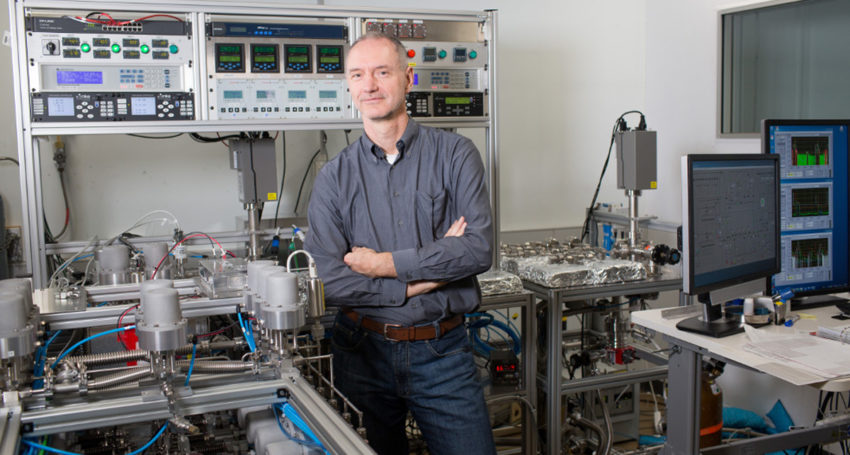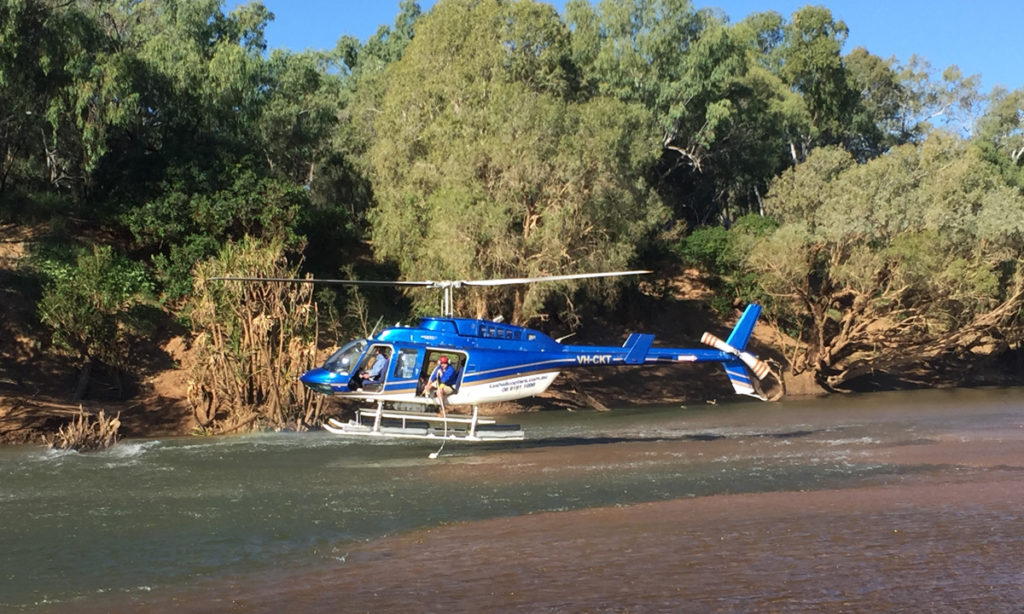The only centre of its kind in the Southern Hemisphere for accurately testing ancient groundwater up to a million years old has opened in South Australia.
The Noble Gas Facility, built at Waite Campus in Adelaide, is now fully operational after a three-year build by CSIRO, Australia’s national science agency.
It will allow scientists to test groundwater with far greater accuracy to provide new insights into the continent’s groundwater systems and better understand the effects to groundwater of further development in regional Australia.
Australia is a very old and flat land mass and is the driest inhabited continent on Earth. This makes groundwater resources of vital importance. Groundwater makes up 98 per cent of the fresh water on the planet.
The Great Artesian Basin in central Australia is the largest aquifer of its kind in the world, covering 22 per cent of Australia, and containing water that is more than a million years old.

CSIRO physicist Dr Axel Suckow at the Noble Gas Facility in Adelaide. Picture courtesy of CSIRO
The Noble Gas Facility is the first in the Southern Hemisphere and one of fewer than a dozen comparable facilities worldwide.
The facility uses the noble gases – helium, neon, argon, krypton and xenon – to better pinpoint and understand the age of groundwater, how long it takes to move through aquifer systems and how those systems are replenished.
Unlike other environmental tracers, noble gases don’t react chemically, have a unique signature and can be used to track extremely slow-moving water.
CSIRO physicist Dr Axel Suckow, who led the team through the build, has worked on similar machines in the Northern Hemisphere.
“It gives us a completely new tool to investigate groundwater in Australia, providing insight on Australia’s groundwater resources from recent times to as far back as the last ice age,” Dr Suckow said.
“We need a better understanding of our groundwater systems and how they are replenished to ensure that, as we continue to use this valuable resource and with a changing climate, we also protect it from overuse or contamination.”
Noble gases can also determine temperatures and conditions at the time the water entered the underground system.
“If you give me a water sample that is 10,000 years old then from the concentration of argon, krypton and xenon, I can tell you the ground surface temperature 10,000 years ago which is very valuable information for paleoclimate studies inland,” Dr Suckow said.
“Noble gases are particularly useful in telling us about groundwater because they can be traced to show us how quickly, or slowly, water moves through underground aquifers; providing a better understanding of the connection between surface water and groundwater flow, and the replenishment of aquifers; and showing if water can move between shallow aquifers and deep underground aquifers through geological layers.

A water sample is taken from the Fitzroy River in Western Australia. Picture courtesy of CSIRO.
“The noble gas helium, for instance, increases due to radioactive decay of uranium naturally present in the rocks through which groundwater flows.
“That means the higher the helium content in the groundwater the older the groundwater is.”
The facility is currently being used to assess groundwater resources and connection of aquifers in the Peel region south of Perth, groundwater resource development opportunities in the Fitzroy River basin in Western Australia as part of the Northern Australia Water Resources Assessment, and the impacts of unconventional gas development on groundwater systems through the Gas Industry Social & Environmental Research Alliance (GISERA).


